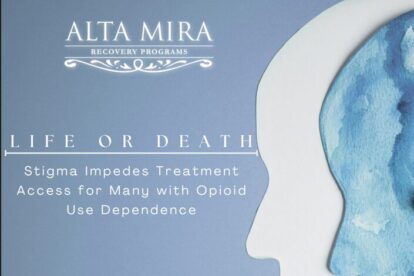How Much Alcohol Is Too Much? The Answers for College Students and Their Parents

We’ll never be able to make our teen’s and young adult’s choices for them. It’s time that they have a full understanding of what drinking alcohol means for their physical, psychological, and emotional health so they can take responsibility for how much alcohol is too much. We should be able to have open and respectful conversations about the risks and consequences of drinking to excess.
It doesn’t matter how old we are: decisions can happen fast, and then, all of a sudden, we’re on the other side. When our decisions take a wrong turn, at best, we learn from them, and at worst, we face the potentially dangerous consequences. We can’t bypass the choices altogether. But we can anticipate them and gather up the knowledge that offers us informed power.
It’s too hasty to tell young people to simply abstain from drinking and not equip them with the knowledge and coping strategies to make the best decisions when under pressure. Likewise, terms like “in moderation” are relative and not necessarily helpful when someone is already in a situation where there’s drinking and it’s time to make decisions now. The best thing we can do is to look seriously at what alcohol consumption means for college-aged people, how much alcohol is too much, and what the short- and long-term consequences really are. Then, we can have real, respectful conversations that empower young people to make their own smart choices.
Defining Terms Related to Drinking Alcohol
Whereas certain markers for alcohol consumption are relative, there are some conditions and situations that we can define objectively. Let’s look at the following list of terms, rather than leaving them open for guessing.
Tolerance
Tolerance to alcohol has to do with how efficiently the body digests a quantity of alcohol, as well as how the brain responds. When someone drinks often and heavily, their liver adapts to this danger by working to process the alcohol more quickly. This is not a positive change as some might believe. If a person is drinking to feel a buzz or to get drunk and their tolerance has increased, they’ll need to drink more for the desired effect. However, this does not mean that the risks of consumption decrease; risks will always increase with more alcohol.
Blood Alcohol Content
Blood alcohol content is a measure of the amount of alcohol present in someone’s blood. This measurement can’t be predicted simply by counting the number of drinks consumed. It will also depend on how quickly a person consumes the drinks, how much food they’ve eaten, whether they’re male or female, how much they weigh, and certain health conditions and medications. In the US, it is illegal for adults over 21 to drive with a blood alcohol content (BAC) that is 0.08% or above. But some people may be significantly impaired and driving dangerously well before that level.
Alcohol Poisoning
Drinking too much too fast can result in alcohol poisoning, which can be life-threatening. The amount and the rate that are dangerous will be different for everyone. Symptoms can include vomiting, pale skin, slowed or irregular breathing, lowered body temperature, confusion, seizures, and unconsciousness. Even just one or two of these symptoms can be a sign of critical alcohol poisoning. And, in any case, a person needs immediate medical attention.
Alcohol Abuse
Alcohol abuse and addiction can certainly go hand-in-hand, but they are defined differently. Alcohol abuse refers to someone drinking too much and/or too often, and it has become a pattern. Even if addiction has not set in, this pattern of alcohol abuse can have serious consequences. School and work performance, relationships, health, and other areas of life may suffer.
Addiction
Alcohol abuse can easily lead to dependence and alcoholism. Officially referred to as alcohol use disorder, one’s dependence can be physical and/or psychological. In the case of addiction, a person’s tolerance has typically risen. They may experience withdrawal symptoms when the body goes without alcohol for a period of time. Their use can seriously harm their life, health, and relationships. They may put the need for alcohol above most everything else. And they struggle to stop drinking even when they try. With alcohol use disorder, a person loses control to the power of the substance.
How Much Alcohol Is Too Much for Each Person?
It’s true that “too much” means different things for different people, based on their weight, height, age, medications they are taking, and other health considerations. It’s also true that people can take this relativity to inappropriate extremes and apply it as a point of pride. In many circles, and especially among young people, having a high tolerance is a boost in status and popularity. And, in the reverse, having a low tolerance or a conservative approach to drinking can be a hit to one’s social status. It might even mean that that person is ridiculed or pressured to drink more. The scope of peer pressure is extremely pervasive, and teenagers and young adults are particularly susceptible to the influence.
Any conclusion about low-risk amounts of alcohol will refer to an average, and this amount may be much lower for some individuals than the average. It’s also very important to note that when it comes to drinking, no amount of alcohol will ever equal no risk.
With the way our bodies process alcohol, it’s important to look at thresholds for any given day as well as for a week in total. It is generally recommended that the average man drink fewer than 14 drinks total in a week and not more than 4 drinks in a single day. Of course, that doesn’t mean that he can have 4 drinks each day, every day of the week, because that would far exceed the 14 drink threshold. For women, the recommendation is 7 drinks or fewer in a week and no more than 3 drinks in one day.
|
For Men
|
For Women
|
|
|
Again, these thresholds may not be truly low-risk for everyone. Some people should not be drinking alcohol at all, and their doctors can help to identify that limitation. Some people may be exceeding the limit for their cardiovascular health or other body systems if they consume more than 1 or 2 drinks in a day. Younger people, especially if they are still growing and developing, will have significantly lower alcohol thresholds that can be considered low risk. Likewise, the particular risks vary from person to person. And it can be difficult to anticipate those specific consequences until it’s too late.
Weighing the Advantages Against the Risks of Heavy Drinking
College is a time of groundbreaking independence for young people. It’s also a time of new and eye-opening influences. Many young adults will experiment with ideas, relationships, adventures, and drinking. We absolutely can empower them with knowledge, self-esteem, and proactive decision-making skills amidst the college drinking culture. We can help them to get a grip on how much alcohol is too much. And we can help them to understand the various potential consequences of drinking.
The Short-Term Risks and Consequences of Excessive Alcohol Consumption
Some of the dangers and damages of drinking can materialize in no time. You won’t always be able to predict the risks or prepare for them. Here are some of the potential short-term risks—some of which may have longer-range consequences too:
- Getting physically sick as your body struggles to process a quantity of alcohol and dehydration—also known as a hangover.
- Impaired judgment, concentration, and reflexes.
- Missing school classes, assignments, and other responsibilities.
- Upsetting relationships if alcohol abuse or dependence affects your daily life and behaviors.
- Crashing and hurting yourself or others if driving a car under the influence.
- Higher risk of violence, including sexual assault and date rape.
- Alcohol poisoning if you consume more than your body can process in a certain period of time.
- Legal trouble if you are drinking under the age of 21 and/or driving under the influence.
- Mixing alcohol with other substances is very common among young people. It can be extremely dangerous and even deadly.
The Long-Term Risks and Consequences of Excessive Alcohol Consumption
Your body’s tolerance changes with repeated drinking, and what used to get you drunk may leave you feeling only buzzed. But that doesn’t mean that your judgment and functioning are unaffected or that your blood alcohol level is lower. And it certainly doesn’t mean that the risks to your long-term health go away. Here are some of the consequences of drinking that you may not recognize right away but that may be developing as you drink over time:
- Severe liver damage and diseases.
- Damage to the pancreas.
- Ulcers and other digestive disorders.
- Cardiovascular disease, high blood pressure, heart attacks, and strokes.
- Cancers.
- Problems with fertility.
- Compromised sex drive and performance.
- Weakened immune system.
- Vitamin and mineral deficiencies.
- Weight gain.
- Damage to brain cells and function.
- Depression and other mental health disorders.
- Severe complications to unborn babies, including fetal alcohol syndrome, if drinking when pregnant.
- Alcohol use disorder.
It’s hard to imagine the possible advantages of status, popularity, and a night of fun outweighing these very common dangers. But it is a dilemma that many college students and other young adults regularly face. Sometimes it’s peer pressure or curiosity or even addiction that influences someone’s drinking. Sometimes it’s not possible to be prepared enough or careful enough to avoid the risks and consequences. While it can be hard sometimes for parents and their teens or young adult children to get on the same page, we can do our best to have honest and respectful conversations about the issues. If you think your child may have a problem with alcohol abuse or addiction, it’s a good idea to reach out to a professional treatment center for advice on next steps. Together, we can empower our young people to make smart choices for their higher good.
Alta Mira offers comprehensive treatment for people struggling with drug and alcohol addiction as well as co-occurring mental health disorders and process addictions. Contact us to learn more about our renowned Bay Area programs and how we can help you or your loved one start the journey toward lasting recovery.






